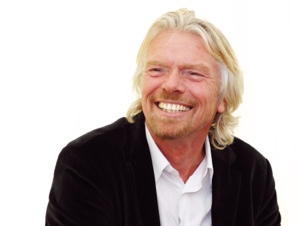I recently read the rather inspirational Be Brilliant Every Day by Andy Cope & Andy Whittaker – not so much a self-help book, more a book to help you change your daily mindset.
“This book is for the person you already are… It’s a reminder that you are already brilliant, sometimes. And that you need to start being brilliant a bit more often.”
Here are 5 pearls of wisdom from their funny, down-to-earth and hugely affecting book.
1. Embrace your inner child
Children are a wonderful example of our natural state of being. Their default setting is playful, delirious, curious, fun, joyful and excitable.
The Andys’ point here is to encourage you to think about what ‘kind’ of person you are, or rather you want to be. Do you want to be dull and boring, or full of life and unbridled enthusiasm.
I often see young kids skipping down the road, singing out loud and I wonder when and why it became socially unacceptable for adults to do the same.
2. Happiness is experience not stuff
There’s been a growing trend during the recession towards people looking for an experience, rather than a consumable product. Witness the rise of events such as Secret Cinema or the generosity shown towards Chris Evans’ Children In Need auction packages.
If you list the top 10 happiest moments of our life, there’s unlikely to be a single product on there. It’ll be the experiences. It’ll be things you’ve done, moments of joy and achievements that have left you grinning, rather than products you’ve purchased.
In other words, stop buying and start living.
3. Remember the Losada Line
Although it’s called a line, the Losada Line is actually a number: 2.9013 to be exact.
It’s the ratio of positive to negative comments necessary to create flourishing relationships. In plain, simple English, it takes about three positives to make up for one negative.
As the book points out, 3 is the minimum number to keep things harmonious and 6 is a much better number to aim for.
And don’t feel as if you need to avoid all negativity. Some bad vibes are acceptable.
Since writing this, I’ve read that the Losada Line has now been debunked as a concept.
4. Live in the ‘now’
Mindfulness has become a bit of a buzzword recently and if you want to be more acquainted with it, I suggest you read this interview with the pioneer behind it, Professor Mark Williams.
One of the major parts of being mindful, though, is accepting that the past is gone and unchangeable and that any vision you may have of the future is unreal.
Now pair this with Andy Cope and Andy Whittaker’s take:
Happiness has been missold as the reward, the elusive end point that we all crave. It’s something you must earn, or pursue… You are sold the vision of ‘I’ll be happy when…’ … What if being happy NOW is the key to success?
In other words, stop waiting to be brilliant and happy and start enjoying your life at the moment.
5. Stop making policies
We all want to be valued. To be respected. So why is it that value and respect is constantly undermined by petty policies at work.
Every time you put a policy, protocol or procedure into your organisation, you take away some passion and trust from the people who are already doing the job… Invariably, rules, procedures and standards are there to stop people being rubbish. The problem is they also clip the wings of those who are brilliant.
As the authors say, policies and rules tend to stifle passion and trust – two of the most important values in any organisation.
Be Brilliant Every Day is full of superb insight and well worth a read.
– – – – –
Every week, I send out a newsletter with links to some of the best and most engaging stories I’ve seen in the past 7 days: Subscribe today.
 Following the terrible crash of a Virgin Galactic test flight,
Following the terrible crash of a Virgin Galactic test flight, 